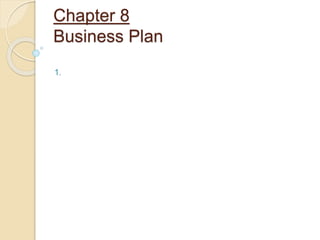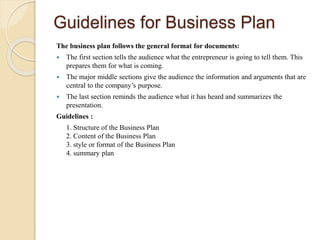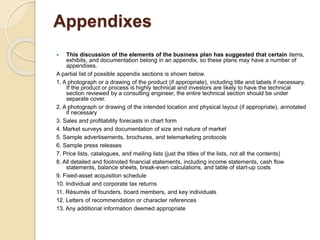The document provides an overview of key elements that should be included in a business plan, including:
1. An executive summary that briefly describes the type of business, company summary, management team, product/service, funds requested, and financial projections.
2. Major sections that cover background and purpose, objectives, market analysis, development and production, marketing plan, and financial plans.
3. Guidelines for each section, including describing the business model and resources, objectives, market size and competitive factors, production processes and quality assurance, marketing strategy and sales forecasts, and financial statements and projections.
The document emphasizes that an effective business plan clearly communicates the business opportunity and strategy to potential investors and other stakeholders
























